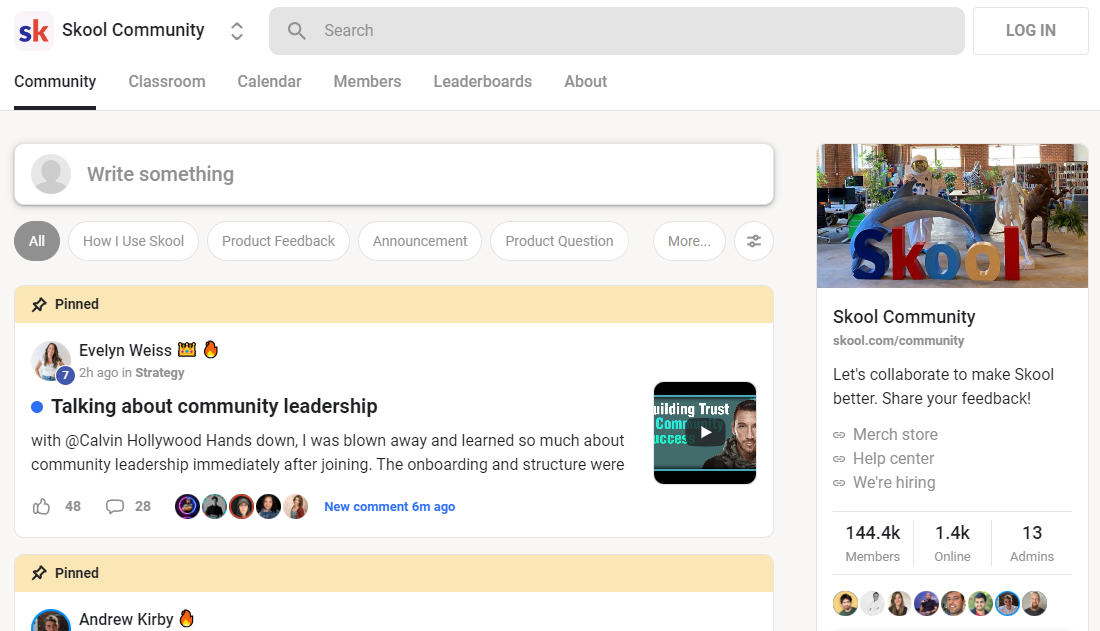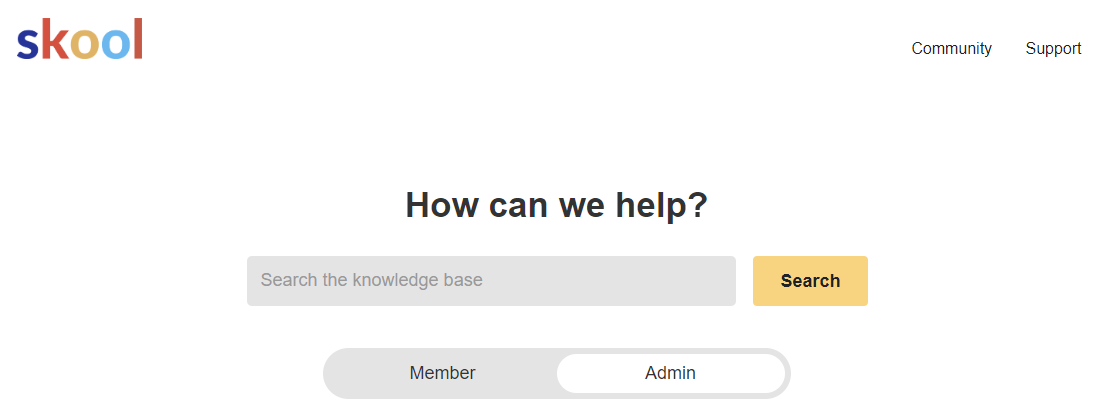Skool uses best-in-class gamification features that enhance engagement. For example, members can gain levels based upon their involvement, which open course content and various other benefits that further motivate them.
Previously, designers had to use different devices for organizing training courses, developing neighborhoods and handling email advertising. This developed a disjointed experience for both creators and their audiences.
Producing Courses
Skool has a basic, easy to use user interface and prioritizes neighborhood structure and program organizing over various other functions. It permits creators to develop a dynamic neighborhood for their training courses and mentoring programs by attaching them with the best target market. This also helps them check the health and wellness of their web content business with the help of an easy dashboard.

To begin, an individual can enroll in a complimentary 14-day test of Skool. Afterwards, they can pay $99 a month for the system to host a solitary neighborhood. There are no other pricing alternatives offered for the moment. Skool also refines payment and pays developers weekly, however it does bill a 2.9% transaction charge.
One of the unique facets of Skool is that it can be utilized to develop interactive programs. These can include online webinars, group jobs and real-time discussions. These types of training courses motivate participation and increase training course completion prices. Additionally, Skool’s gamification attributes assist to urge neighborhood involvement. For instance, participants can earn points and unlock program content when they get to particular levels in the community.
Customers can likewise make use of the social eat Skool to post updates and engage with others in the community. The feed appears like a Facebook team, however with a more regulated means of uploading. This aids to stay clear of the sort of spam and abuse that happens on various other social systems.
Handling Communities
Skool is a really easy platform to make use of, for both members and admins. Its simplicity is among its major selling factors– when somebody joins your community they will not be confronted with a number of choices or functions that can derail their experience and perplex them.
The system begins as a private team by default, however you can easily alter this to open your community to anyone that you intend to be part of it. Once you’ve done this you’ll see a social feed like you would certainly on Facebook Groups or WhatsApp (but without all the scam things and swearing).
You can also include a classroom tab to your neighborhood that you can make use of to share educational content with your participants. This feature is particularly valuable for areas that are focused on learning or expert development as it assists to produce an academic structure and makes it very easy for participants to track their progression. Furthermore, the platform has gamification elements that allow participants to make points by suching as posts or comments. When they get to a particular degree they can open sources, such as courses, further driving involvement.
The various other cool point is that Skool has a mobile application, similar to Mighty Networks or Slack, so members can stay up to date with your neighborhood and engage on the go. This is a wonderful way to motivate and involve your participants and to help them obtain support from each other when they need it, instead of simply turning to you for solutions.
Who Invested in Skool
Skool concentrates on gamification, permitting customers to earn factors and badges for their payments. This inspires participants to involve with the neighborhood and contribute to conversations. Consequently, this helps them level up and unlock rewards like video clips and other content. Admins can additionally set programs to be opened at specific degrees to additional drive involvement.

The Skool user interface is spick-and-span and user-friendly. Its highlights consist of the Community tab, which looks much like a Facebook group feed. Below, users can post remarks and message as well as upload pictures, web links and videos. Participants can additionally check out each others accounts and connect with them. Additionally, users can create personal groups in the area to talk about particular subjects.
One more attribute of Skool is the Classroom tab, which resembles a YouTube livestream or Zoom conference. Using this, managers can organize trainings and webinars for their students. They can additionally include events in the schedule to remain upgraded on upcoming occasions and Who Invested in Skool.
Nonetheless, some elements of Skool can make use of improvement. For instance, the system isn’t versatile when it comes to money making as users can not offer numerous prices tiers for their training courses and area memberships. Moreover, the device does not have an email advertising function, which may be a deal breaker for some course designers. It also does not have native video clip hosting, implying that individuals require to utilize exterior platforms like YouTube, Loom and Vimeo for their video clips.
Adding Content
The procedure for adding content and communicating with participants on Skool is simple and straightforward. Admins can create messages with text, GIFs, videos and surveys. They can additionally add occasion calendars to inform neighborhood members of upcoming team Zoom calls or live streams. Furthermore, they can use Skool’s email broadcast feature to send a message to the whole neighborhood with a single click. This eliminates the need for tagging and checklist segmentation, which can be cumbersome.
Moreover, Skool’s gamification attributes can boost interaction and individual retention. It urges participants to engage with the web content often by awarding them with various perks. These include opening training course content, earning factors and making a place on area leaderboards.
While Skool supplies a host of valuable attributes for producing and supplying on the internet training courses, it’s except everybody. The platform is best for trainers, consultants and various other info business owners. However, the price tag can be a barrier for some people seeking to monetize their online material.
Additionally, the absence of basic rates and a short free trial may be a deterrent for several. On top of that, the system’s laser-focus on eLearning can make it less desirable for people that wish to sell various other digital products. Nonetheless, in spite of these downsides, Who Invested in Skool is still a viable choice for any person wanting to create and monetize online courses.